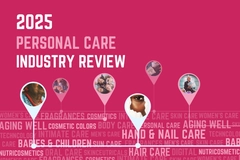Registrar Corp and Denver Health unveil US FDA-ready cosmetic adverse events platform
Key takeaways
- Registrar Corp and Denver Health have launched an platform to help cosmetic brands track and report adverse events.
- The solution combines advanced software with physician-led clinical reviews to ensure MoCRA compliance and audit-ready reporting.
- Rising FDA reports highlight the need for tools that protect consumers and strengthen transparency in the cosmetics industry.

Registrar Corp and Denver Health have created an integrated solution to help cosmetic brands worldwide track and investigate adverse events related to the use of their products.
The Adverse Events Protection Program uses Registrar Corp’s Adverse Event Management software for consumer intake. It does so via mobile devices, investigation tracking, Food and Drug Administration (FDA) reporting, digital recordkeeping, and audit-readiness.
Denver Health’s in-house clinical team of physicians reviews and determines the severity of the adverse event and creates a reporting package.
The announcement follows the US FDA’s launch of a public dashboard for consumers to access and report cosmetics that they believe to have exhibited adverse effects.
The FDA Adverse Event Reporting System (FAERS) Public Dashboard for Cosmetic Products is designed to facilitate the public’s access to “real-time” event data on cosmetic products. The interactive tool aims to increase government–constituent transparency.
The Modernization of Cosmetics Regulation Act of 2022 (MoCRA) requires cosmetic brands to investigate and report serious incidents resulting in severe health outcomes like death, life-threatening experiences, or significant disfigurement to the FDA within 15 days.
According to the FAERS Public Dashboard, cosmetic companies filed 26,262 serious adverse event reports in 2024, a five-fold increase from 2023.
 Physicians review and verify cosmetic adverse event reports for accuracy. FAERS data is not an indicator of the cosmetic product’s overall safety profile — an investigation is needed to draw a conclusion. At the launch of the US FDA’s public platform, it issued a disclaimer that it does not verify reports in the dashboard. Additionally, the publication does not conclude that the product caused the adverse effects.
Physicians review and verify cosmetic adverse event reports for accuracy. FAERS data is not an indicator of the cosmetic product’s overall safety profile — an investigation is needed to draw a conclusion. At the launch of the US FDA’s public platform, it issued a disclaimer that it does not verify reports in the dashboard. Additionally, the publication does not conclude that the product caused the adverse effects.
“The FDA does indicate that the data they made available has limitations, namely: duplicate and incomplete reports; opportunity reports being mistakenly linked to causation; information in reports have not been verified; and rates of occurrence cannot be established with reports,” David Lennarz, president at Registrar Corp, tells Personal Care Insights.
“However, providing this data does improve access and transparency, and allows the FDA to identify safety signals which may spur a need for further scrutiny of specific products.”
Keeping companies and consumers safe
Registrar Corp says that cosmetic brands struggle to intake, track, investigate, and report on adverse events due to the extensive amount of information. It cites personal identifiable and medical information, needed from affected consumers.
“Combined with Registrar Corp’s AEM software, cosmetics brands now have a complete Adverse Events program from consumer intake to FDA submission,” says Dr. Kevin Nork, medical director at Rocky Mountain Poison & Drug Safety.
Lennarz tells us: “Registrar Corp’s Adverse Events Protection Program allows cosmetic brands to intake, track, investigate, report, and digitally store adverse events.”
“The platform provides for an in-house clinical team of physicians to review and determine the severity of the adverse event and deliver a complete reporting package within five business days.”
Beauty companies rarely have in-house medical expertise to conduct adverse event investigations. The Adverse Event Protection Program claims to give these companies expert resources and systems to protect brands and their consumers when an adverse event occurs.












